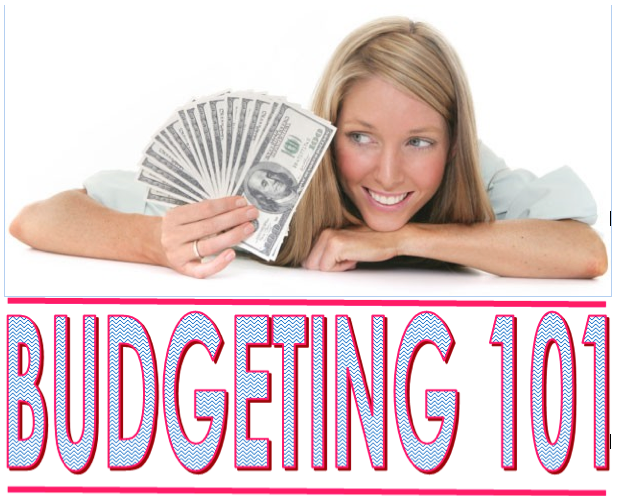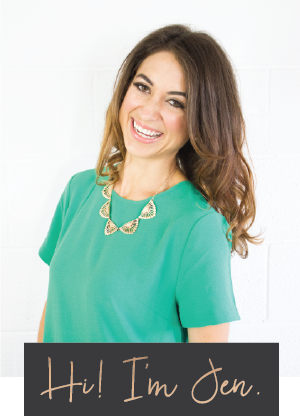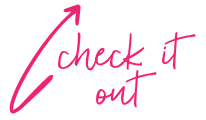How to Build and Track Your Personal Budget
Budgeting: we all know it’s important but most of us dread having to do it. Let’s face it, spending money is much easier without having to think about where it’s going or having to acknowledge that we spend that much on happy hours with the girls.
At the same time, spending money without direction can leave us feeling a bit anxious. Have you ever found yourself wondering if you’ll be able to pay the next credit card bill or nervous that the last check you wrote is going to bounce?
Not knowing where out money is going can leave us feeling out of control. When approached with the right attitude, keeping track of your budget can actually be a liberating exercise. When you know you’ve got your expenses covered and have dedicated specific amounts of money to clothes, dinners out, etc., you lose the guilt of spending the money. You’ll even find that your money starts to stretch further because you’re in control of where it’s going.
When I graduated from college my parents gifted me with a financial planning course—a set of books on tape and a workbook to teach me how to spend my new paycheck wisely. Though not as glamorous as a new car or exotic trip, it was one of the best gifts I received. Taking the self-guided course taught me the fundamentals of creating and tracking a budget. Using the basic principles the course taught, I established a system that worked best for me.
Being able to manage your personal budget is a skill I strongly believe every Single Girl should be equipped with. For that reason, I’m sharing with you my personal budgeting process and budgeting template. If you haven’t already found a system that works for you, give this a try!
Step 1: Assess your monthly income
You’ll want to take account of how much money you are bringing in from various income streams. Start by knowing how much you currently have in your checking account. Add in your monthly paycheck from your day job as well as an income you generate on the side (babysitting, freelance work, or birthday money). Lastly, take stock of any cash you have in your wallet. This will give you the full picture of how much you have to spend and save for the month.
| INCOME | |
| Beginning of Month Checking Account Balance | $ 1,000.00 |
| Monthly Paycheck | $ 3,750.00 |
| Additional Income Source | $ 2,00.00 |
| Cash on Hand | $ 50.00 |
|
TOTAL |
$5,000.00 |
*Example*
Step 2: Assess your savings & investments
Identify any savings or investments you have and what their current balances are. Don’t have any savings? Don’t worry. Eventually we will set goals for how and how big we want these to grow but for now just figure out what you’re working with.
| SAVINGS & INVESTMENTS | |
| Beginning of Month Savings Account Balance | $2,000.00 |
| 401(K) | $7,000.00 |
| Mutual Fund | $1,000.00 |
|
TOTAL |
$10,000.00 |
*Example*
Step 3: Identify fixed monthly expense
Every month there are a few expenses that are guaranteed to hit your wallet. These are most likely made up of your monthly rent and utilities as well as any car payments you have. Determine everything that falls into this list and how much each item will cost you per month. This will let you know how much you need to protect for before you can allocate money to additional expenses.
| FIXED EXPENSES | % TOTAL INCOME: 30% |
| Rent | $1,100.00 |
| Utilities | $50.00 |
| Car Payment | $250.00 |
| Car Insurance | $100.00 |
|
TOTAL |
$1,500.00 |
*Example*
Step 4: Identify variable expenses & Target %s
Once you have identified your fixed cost, you can begin to layer in additional expenses that will vary from month to month. I start by identifying categories like food, entertainment, and shopping… then leave room to add specific line items. Because these costs can vary, it’s a good idea to set a budget for each line item. For items like gas and groceries I set my budget based on the amount I historically have spent on these items. For things like shopping and eating out I determine what percent of my income I want to allocate to each.
| VARIABLE EXPENSES | % TOTAL INCOME: 50% |
| TRANSPORTATION | % TOTAL INCOME: 5% |
| Gas | $200.00 |
| Carwash | $15.00 |
| Parking | $10.00 |
| Taxis/Public Transportation | $25.00 |
| FOOD | % TOTAL INCOME: 10% |
| Groceries | $250.00 |
| Dining Out (2%) | $250.00 |
| SHOPPING | % TOTAL INCOME: 15% |
| Beauty and Grooming | $250.00 |
| Clothing | $300.00 |
| Home | $100.00 |
| Gifts/Donations | $100.00 |
| ENTERTAINMENT | % TOTAL INCOME: 15% |
| Bars | $150.00 |
| Concert/Movie/Show | $200.00 |
| Weekend Trip/Vacation fund | $400.00 |
| PERSONAL CARE | % TOTAL INCOME: 5% |
| Prescriptions/Vitamins | $20.00 |
| Gym Membership | $100.00 |
| Mani/Pedi | $30.00 |
| Hair cut/color | $100.00 |
|
TOTAL |
$2,500.00 |
*Example*
Step 5: Set Savings Goals
Setting savings goals is an important step in the budgeting process because it allows you to protect yourself in emergencies, for large investments, and for future needs. I have established a four-step process to determine how I allocate my incremental income towards savings.
- Create an Emergency Fund: This is a stash of money you can rely on in case any unexpected expenses come up like a car or home repair. I list this first because it gives you peace of mind to know you are protected in these types of situations. I would recommend you save $1000 in this fund.
- Pay off debt: Getting debt free is the ultimate goal here and should be your next priority. Do what you can to pay off school loans, car payments, and other outstanding expenses as quickly as possible. Debt is a burden that keeps you from planning for your future.
- 3-6 months of expenses in savings: As soon as you have your debts completely paid off return to your emergency fund and begin to grow it from $1000 to 3-6 months of savings. The idea is that the money is easily accessible and can be liquidated in the event you are no longer bringing in a steady income. This step is what allowed me to quit my job and begin working on a start-up.
- Investments: Lastly, when you have completed steps 1-3 you’ll be ready to put money into investments. These are things like your 401 (K), mutual funds, stock, etc. This is money that you have a long-term vision for. It is not meant to be accessed but to be set aside for 10+ years of growth.
| SAVINGS | % TOTAL INCOME: 20% |
| Emergency Fund | – |
| Pay off Debt | – |
| Savings Account | – |
| Investments | $1,000.00 |
|
TOTAL |
$1,000.00 |
*Example*
In general I like to reserve at least 20% of my income each month to go toward savings, more if possible.
Step 6: Putting it all Together
The last step is to pull all the pieces of the budgeting puzzle together into one document where you can track how you are going throughout the month. To make budget tracking a part of my routine, I set aside time each Sunday to go through my banking accounts and write down how I spent my money. I choose to do it once a week because I’ve found that trying to keep track of every expense as it happens is too difficult a task for me to maintain consistently. To make this even easier for you, I am sharing the budgeting template I use to track my own cash flow.































